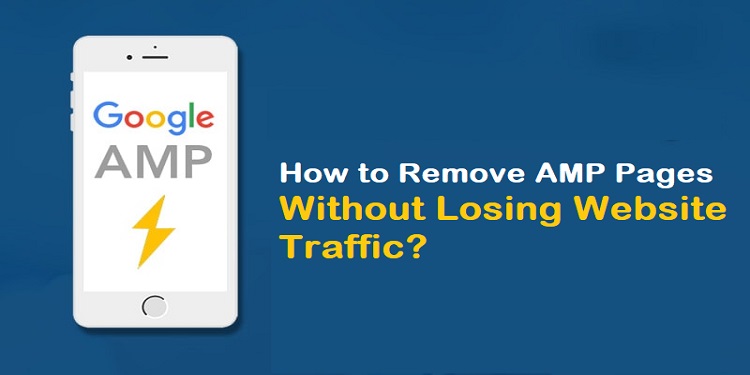
AMP, or “Accelerated Mobile Pages,” is a term. Google’s AMP programme is specifically intended to increase mobile web traffic and speed up site loading. Prior to discussing the subject of removing Google AMP pages from WordPress. Want to know what AMP is?
AMP Pages, What is it?
AMP HTML is used to create AMP pages. The initiative known as Accelerated Mobile Pages (AMP) is open-source. It offers a foundation for making content pages consistently load quickly. It seeks to enhance mobile web performance.
Publishers have noticed a boost in traffic and time spent on the website since the typical AMP page from Google search loads in less than 1 second.
AMP Advantages
- Put the user experience first.
- CSS is limited to 75KB.
- Reach lightning-fast load times.
- Boost Mobile Ranking
- Increase CTR
- Less reliance on data
- Enhanced server efficiency
- Free CDN, as well as improved ad viewability
Why should you Delete Google AMP Pages from your Website?
Why would you remove Google AMP Pages given all the advantages? There are a few issues with this method. Anybody may benefit from these. Before that, we’ll let you know who will profit from it and who won’t.
Owners of news channels, affiliate marketers, and e-commerce websites all benefit greatly from AMP. And if you are looking to start your own blog, e-commerce website or an affiliate marketing platform and want to learn about SEO then you should definitely join us for the best Seo Course in Noida and accelerate your digital marketing skills.
Similarly, AMP is not recommended for individuals who run a website for a business and expect conversion, or for those who wish to monetize their blogs.
The AMP problem, which boosts traffic when AMP is used, is being affected and criticized by several blogs. However, they see a 50–60% dramatic decline in revenue. Even the money coming in already is decreasing. Therefore, this is bad for bloggers.
Similar to this, business owners can have built their websites to draw customers. But AMP only offers a select few unique styles. They are thus unable to create as they choose. Additionally, their conversion rate has dropped by 50–60% as well.
Also Visit: Seo Services in India
Cons of AMP
- Reduced Ad Revenue
- Lowering the conversion rate
- Analytics Is Simplified
- Server Cache for Google
- Email pop-ups and opt-in forms will not appear on AMP sites.
Simple Procedures for correctly Removing AMP Pages
Most bloggers believe that “AMP google” is a monster that has reduced their income and that AMP is unable to influence user behavior like subscription rates and contact form completion. Therefore, they would rather WordPress delete Google AMP pages.
- Set Redirects in .htaccess
Do manual redirection in your domain’s.htaccess file by first logging into cPanel. Please proceed as instructed.
- Open File Manager after logging into cPanel. There, choose your domain, and download the.htaccess file that is contained there.
- Edit the downloaded file by using the right-click menu. Then insert the following code: “RewriteEngine On.”
/ Switch from AMP to non-AMP
RewriteCond (.+)/amp(.*) %REQUEST URI Rewrite rule: [R=301,L] $
This is how the code will appear after being added.
/ Switch from AMP to non-AMP
RewriteCond%REQUEST URI (.+)/amp(.*) With RewriteEngine
Rewrite rule: [R=301,L] $
After adding, save.
Following the code save, upload the.htaccess file to the server.
- Turn off the AMP plugin if you use WordPress
The Google AMP plugin ecosystem is large. Log into WordPress and disable any installed plugins.
Logging into WordPress, going to Plugins, Installed Plugins, then clicking Deactivate
Delete the plugin after deactivating it.
- Turning off Auto AMP in Google Adsense
Click on overview under the Ads tab after logging into Google Adsense. Press AMP is OFF.
Remove the AMP Adsense codes from your website as well. detailed assistance from Google for eliminating AMP content.
Finally, remove AMP by doing each of the aforementioned processes one at a time. We sincerely hope you find this information to be helpful.
The Procedures Below can be used to Remove Both AMP and non-AMP pages from Google Search:
- Removing the page’s AMP and non-AMP versions from your server or CMS.
- To request the deletion of your page, use the Remove old content tool.
- The URLs (web addresses) for the AMP and non-AMP versions of the page you want to delete should be entered.
- To make sure that your AMP material gets taken out of the cache, update the Google AMP Cache.
- By utilizing Google Search to look for your material, you may confirm that your AMP page has been deleted. Use the AMP status report in Search Console to confirm the deletion of several AMP pages. Keep an eye out for a declining trendline on the graph of “indexed AMP pages.”
Tip : Check the help section of your CMS provider’s website or get in touch with them to disable AMP. When AMP is disabled, if your site is hosted on a CMS domain, the CMS might reroute visitors to the canonical non-AMP page. For help, get in touch with your CMS supplier if the redirect doesn’t happen.





